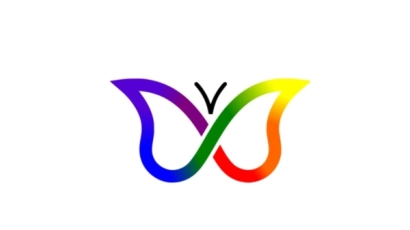Have you ever felt like you’re putting on a performance just to get through the day? You appear to be professional, organised and competent, but inwardly, you’re kind of screaming. Needless to say, it can be terribly overwhelming. Sure, having to ‘fake’ your way through work happens to the best of us, but for people with ADHD this isn’t just a once-off. It’s a constant and stressful experience that they have to go through near-daily. This is called ‘ADHD masking.’
What is ADHD masking?
So, what’s ADHD masking, really? ADHD masking is when someone with ADHD presents in a way that makes it seem as if they’re not living with the disorder, according to this article by Verywell Mind. Put simply, that means that the person with ADHD conceals, or masks, their symptoms of ADHD.
Masking isn’t exclusive to ADHD, by the way! In fact, it’s also present in people with autism and people with mood disorders, such as depression. However, ADHD masking specifically will be the primary focus of this article.

Why do people with ADHD mask?
People with ADHD are neurodivergent, meaning that their brains are structured and work differently from neurotypical brains. What many people consider to be ‘social norms’ are really designed according to expectations of neurotypical people. Therefore, they may not feel as natural to a person with ADHD as they do to a person without ADHD.
For example, a person with ADHD may find it more difficult to pay attention or stay engaged in conversations. Even if they are actually engaged in conversation, they may be fidgeting and thus might appear distracted or unfocused. However, this act of fidgeting may garner unwanted attention. Thus, people with ADHD might need to mask and suppress their natural urge to fidget.
This is especially true for highly structured environments such as work or school. Environments such as these place a lot of emphasis on routine and professionalism, which may lead to ADHD masking as a survival strategy. It helps people with ADHD get by, avoid criticism and function in spaces that aren’t built to accommodate neurodivergence.
All of the above is especially true for women with ADHD. In fact, research suggests that women are more likely to mask their ADHD. This makes it harder to diagnose ADHD in women, which leads to fewer ADHD diagnoses for women than for men. We talk a little more about it in this article.
What are the negative impacts of ADHD masking?
Needless to say, ADHD masking is detrimental in the long run. The negative impacts of ADHD masking range from emotional to mental and physical impacts. Here’s a non-exhaustive list of just a few:
- Overcompensation, e.g. excessive and irrational overthinking in order to compensate for impulsiveness
- Difficulty with emotional regulation
- A sense of identity loss due to constant masking
- Fatigue and/or burnout from ADHD masking
- Stress and anxiety
- Lack of sleep and physical exhaustion
ADHD masking isn’t always conscious. Sometimes, a person with ADHD may be so used to masking that they might just use it as a coping mechanism in spaces that they’re not very comfortable in. However, ADHD masking is ultimately unhealthy, so it’s important that we identify its signs and examples to take active steps to stop masking.

Signs and examples of ADHD masking
In our article about ADHD, we mentioned that ADHD can be presented in three forms: Inattentive ADHD, hyperactive ADHD and the hybrid form. Likewise, ADHD masking can be presented as masking of the inattentive ADHD, the hyperactive ADHD or the hybrid form of ADHD.
This list of signs and examples aren’t exhaustive by any means, and masking is presented differently on different people. However, this is a good place to start understanding some common examples of ADHD masking.
Examples of inattentive ADHD masking
- Having to focus twice as much as one’s peers to achieve the same result
- Having to place excessive emphasis on deadlines to ensure that one does not miss them
- Checking one’s work multiple times before submission in order to make sure that there are no careless mistakes
- Having to put in extra effort to keep up and stay engaged in conversations, even with friends or family
- Having multiple alarms or reminders for deadlines
- Overcompensating by being extremely early, in order to avoid being late
- Overcommitting to activities in order to avoid being unproductive
Examples of hyperactive ADHD masking
- Staying extremely silent during conversations, not because one has nothing to contribute, but out of fear of interrupting another
- Suppressing one’s energy to appear composed, such as avoiding fidgeting with one’s hands or bouncing one’s leg
- Bottling strong emotions up
- Feeling restless but instead mirroring another person’s body language, which can be exhausting if one focuses better when moving
- Feeling exhausted or burnt out by suppressing one’s emotions and natural behaviours throughout the day
How do you stop masking?
Identify when and why you’re masking
The first step to unmasking is to pay attention to how you behave around other people. It’s important to be aware of your own natural behaviour, and when you’re suppressing it. Are you putting in extra effort to appear composed, when you’re inwardly physically and mentally restless? Or do you have to concentrate especially hard to actively participate in an ongoing conversation?
It’s also important to reflect on why you might be masking. In some cases, masking might be the most appropriate coping mechanism that can help with ADHD at that given moment. For example, it might not be very professional to start fidgeting when interacting with an important client at work. However, most of the time masking can be avoided and it would be healthier for the person with ADHD to unmask instead.
Explore healthy alternatives to masking
The nature of ADHD masking is to ‘camouflage’ and fit in with one’s environment. However, that’s not always the only option to coping with ADHD. For example, if you find yourself masking in loud and large gatherings, there’s no shame in leaving earlier or rejecting the invite to the party instead of masking during the party.

It might be helpful to reconsider one’s personal boundaries and thresholds. At what point do you start masking? Why? If you weren’t masking, what would you be doing instead? Try to work out a way that lets yourself feel comfortable without having to mask. This will be more beneficial to your physical, mental and emotional health in the long run.
Seek support
It may also be helpful for you to talk things over with a professional. Therapy may be able to help you come up with healthier coping mechanisms to ADHD masking, and to better regulate your emotions and thought patterns.
Don’t be afraid to ask your loved ones for advice as well. Connect with them and let them support you when you unmask. Tell them about your specific needs and how you would like to be supported. You’re not alone in this journey!
If you would like to share your own experience with ADHD masking, or if you’ve got any questions about it, feel free to drop us a comment below. We’d love to hear from you 💬👇
